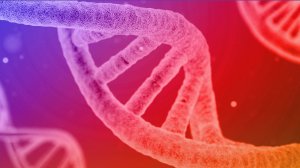Presented By: Ecology and Evolutionary Biology
EEB Thursday Seminar: Mutation, drift, and the origin of subcellular features
Michael Lynch, Director, Biodesign Center for Mechanisms of Evolution and Professor, School of Life Sciences, Arizona State University

Abstract
Although natural selection may be the most powerful force in the biological world, it is not all powerful. As a consequence, many aspects of evolution of the molecular level can only be explained by the inability of natural selection to operate. This general principle explains a lot about the diversity of genome architectures across species, and also appears to extend to numerous higher-level features of cells: the evolution of the ~1000-fold range in mutation rates that exists among species; greatly elevated rates of transcription error; the divergence of the multimeric states of proteins; and the phylogenetic drift of gene-regulatory vocabulary.
An attempt will be made to describe how these biological observations can be explained at the theoretical level, in some cases using methods derived from statistical mechanics. A fundamental principle is that although natural selection relentlessly pushes traits to the highest possible level of refinement, the limits to perfection are dictated by the power of random genetic drift rather than by intrinsic molecular limitations on repair mechanisms or by selection for an optimum mutation rate. The implications of this drift-barrier hypothesis are that the population-genetic environment imposes a fundamental constraint on the paths that are open vs. closed for evolutionary exploration in various phylogenetic lineages, hence defining the patterns of adaptation seen at the molecular and cellular level. Additional examples may be drawn from recent observations on the bioenergetic costs of maintaining and expressing genes.
Light refreshments are served at 4 p.m.
Although natural selection may be the most powerful force in the biological world, it is not all powerful. As a consequence, many aspects of evolution of the molecular level can only be explained by the inability of natural selection to operate. This general principle explains a lot about the diversity of genome architectures across species, and also appears to extend to numerous higher-level features of cells: the evolution of the ~1000-fold range in mutation rates that exists among species; greatly elevated rates of transcription error; the divergence of the multimeric states of proteins; and the phylogenetic drift of gene-regulatory vocabulary.
An attempt will be made to describe how these biological observations can be explained at the theoretical level, in some cases using methods derived from statistical mechanics. A fundamental principle is that although natural selection relentlessly pushes traits to the highest possible level of refinement, the limits to perfection are dictated by the power of random genetic drift rather than by intrinsic molecular limitations on repair mechanisms or by selection for an optimum mutation rate. The implications of this drift-barrier hypothesis are that the population-genetic environment imposes a fundamental constraint on the paths that are open vs. closed for evolutionary exploration in various phylogenetic lineages, hence defining the patterns of adaptation seen at the molecular and cellular level. Additional examples may be drawn from recent observations on the bioenergetic costs of maintaining and expressing genes.
Light refreshments are served at 4 p.m.